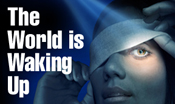Thrive Documentary Catching Fire
Earlier this month the long-anticipated documentary “Thrive” (http://thrivemovement.com/) was released, and its controversial views are catching fire in the personal development circles I like to roam in.
Before I tell you why watching “Thrive” will make you a better filmmaker, let me first announce that I’m extending the holiday sale on my online documentary seminars. I’ve had some interest in an extension, so I’m making this great deal available to everyone.
For the next 48 hours, you can get all of my seminars (valued at $625) for $79.97. Go to https://newdocediting.com/products/. (Note that I will be removing some of my seminars soon, permanently, to make way for fresh educational products.)
Now back to “Thrive”. Whatever you think of conspiracy theories, UFO’s and secret geometric codes, watch “Thrive” as a stellar example of a documentary that spends at least 25% of its on-screen currency on cutting-edge solutions, rather than problems.
Many filmmakers, especially those who attend film school, tend to shy away from spelling out possible solutions to their social issue films, preferring to focus entirely on the injustice or ignorance (or whatever the perceived “problem” is).
But in my experience, this breed of films attracts a small tribe of viewers, the proverbial “converted”. Films with a strong call to action tend to inspire larger audiences, giving viewers hope along with the mandate to act.
Part investigative journalism that follows the money, and part social transformation media that manages to be funny, “Thrive” is also a terrific example of why it makes sense for the filmmaker himself to narrate the tale.
Directed by Foster Gamble, a direct descendent of the Proctor & Gamble empire, this personal documentary makes the case that a small cadre of individuals are controlling the planet—and points the way to a better world. The handsome son of privilege is the perfect whistle-blower.
With the Occupy Movement gaining steam, and in a day when everyone knows the state of the world is in trouble, this positive-focused film seems to be finding a fan base among the more open-minded of the 99 percent.
Why else should you watch “Thrive”? From a documentary storytelling point of view, “Thrive” not only exemplifies personal narrative and solution-oriented films at their best, but this well-funded film also features what I call a “structural graphic”.
A structural graphic is an animation, such as a timeline or motif (see “The Corporation” or “Who Killed the Electric Car?”), which guides the viewer through the film’s structure. Check out green-screen capsule animation from which director Gamble narrates his findings.
In terms of sensibility, “Thrive” isn’t for everyone. But it’s a great example of how to do some things right. Let me know what you think of it.
For more information on how to structure documentaries with structural graphics (or even good old plot points), take advantage of my holiday sale on online documentary seminars at https://newdocediting.com/products/.
